
TECNALIA is the largest applied research and technological development organization in Spain, one of the largest in Europe, and also a member of the Basque Research and Technology Alliance. As a leading global research firm, Tecnalia designs and develops new technologies working with global partners in the drones / unmanned aircraft systems (UAS) sector for inspection, transport, and maintenance tasks using new flying architectures. As urban air mobility becomes an integral part of a future transportation system, Tecnalia’s Innovative Air Mobility department is leading the industry in creating advanced concepts in the drone/UAS sector. Using the transformative potential of cloud-native CFD simulations, they share insights and strategies on how they have deployed simulation as part of their R&D process to develop the next generation of air mobility.
Tecnalia works on the development of technologies and new business models that contribute to change toward a future mobility scenario that has a low environmental impact, is connected, efficient, and safe for all. In this context, they collaborate with industrial partners and supply chains in the mobility industry as well as local administrations, mobility managers, and end users both business and consumer. Specifically, the aim is to focus on the improvement and optimization of transportation vehicles, both land and air, and their interaction and integration in the urban and interurban ecosystems. A recent focus has been on UAS for the inspection, transport, and maintenance sectors. Working in this complex field with multiple actors and stakeholders requires an interdisciplinary team with specialist skills.
The team’s overall objectives are:
Lucas Juan Bernácer Soriano (Lucas) is an aeronautical engineer in the Innovative Air Mobility department at Tecnalia. Lucas started working in the Innovative Air Mobility department of Tecnalia in 2022 and deals with computational fluid dynamics, mechanical design, finite element modeling, and aircraft dimensioning. Certified by Dassault Systèmes as a CATIA V5 specialist in mechanical and surface design, he has also participated in different European projects that promote urban air mobility and is an expert user of SimScale. Lucas and the wider team have specialized in developing solutions for future sustainable and intelligent urban mobility, with zero carbon and environmental footprint.
SimScale was very easy to get started with. I was the only CFD expert and in several projects, people from the department decided to include CFD as they found it very easy to use after a 1-hour explanation of how things worked and how to set up a simulation. This has broadened access to simulation within Tecnalia.

Lucas Juan Bernácer Soriano
Aeronautical Engineer at Tecnalia
A recent example is an aerial vehicle that was developed as an extension from an innovative proof of concept demonstrator called Concept Integrity that utilized a novel aerodynamic stability system called FlyFree for comfortable flight in adverse weather conditions. The vehicle under development is intended for people transport and logistics in urban and metropolitan areas and will be completely autonomous and fully electric. Its aerodynamic stability is especially important when considering the turbulence and atmospheric boundary layer phenomenon that are prevalent in dense urban areas, that vary from city to city.
To evaluate these aerodynamic and complex flow characteristics, Lucas and the team have been making extensive use of SimScale, which has several analysis types available including CFD, FEA, thermal analysis, and now electromagnetics.
Tecnalia has been using SimScale’s CFD solvers to evaluate the aerodynamic performance of their aerial vehicle designs. The team wanted to increase the level of detail and accuracy in the early design process, which meant having access to higher fidelity tools in the conceptual and preliminary design phases. They chose to integrate SimScale in the preliminary design phase for the new proof-of-concept project for the following key reasons:
The team had developed a design workflow based on years of experience which sees a level of analysis detail increase at each stage, as the design cycle progresses, from preliminary to concept to detailed stages. The use of SimScale was integrated into this proven workflow.
• Early stages using sketches and experience as a starting point
• Large number of design alternatives
• Low-level detail
• Study of significant interactions using CFD simulation

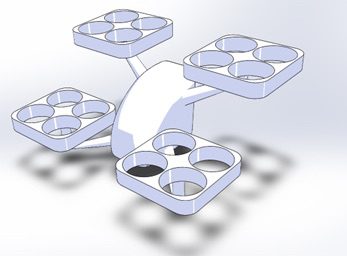
• Major configuration of main components and design is fixed
• Increasing level of detail using simulation results
• Occasional reshapes based on simulation feedback
• High level of detail using full CFD simulation setup
• Requires high confidence in results
• Full-scale development of a 3D model with large mesh
• Results are used to validate performance and plan prototyping/production stages.
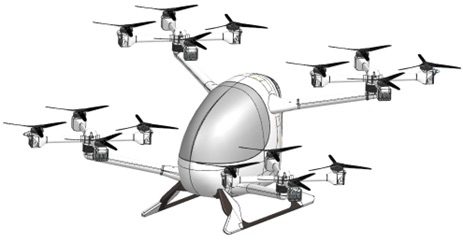


The Concept Integrity is an electric aircraft technology demonstrator developed by Tecnalia that has flown in Spain and Europe. The Concept Integrity is used to validate the effectiveness of the
FlyFree technology, a unique stability system that allows comfortable flight in adverse conditions.

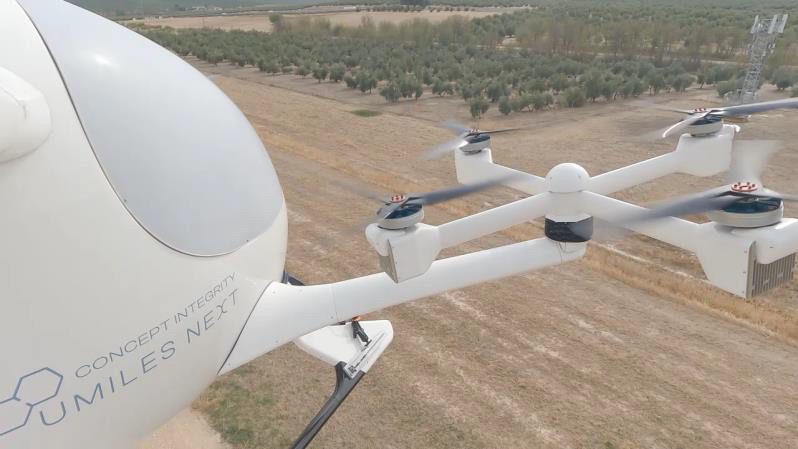
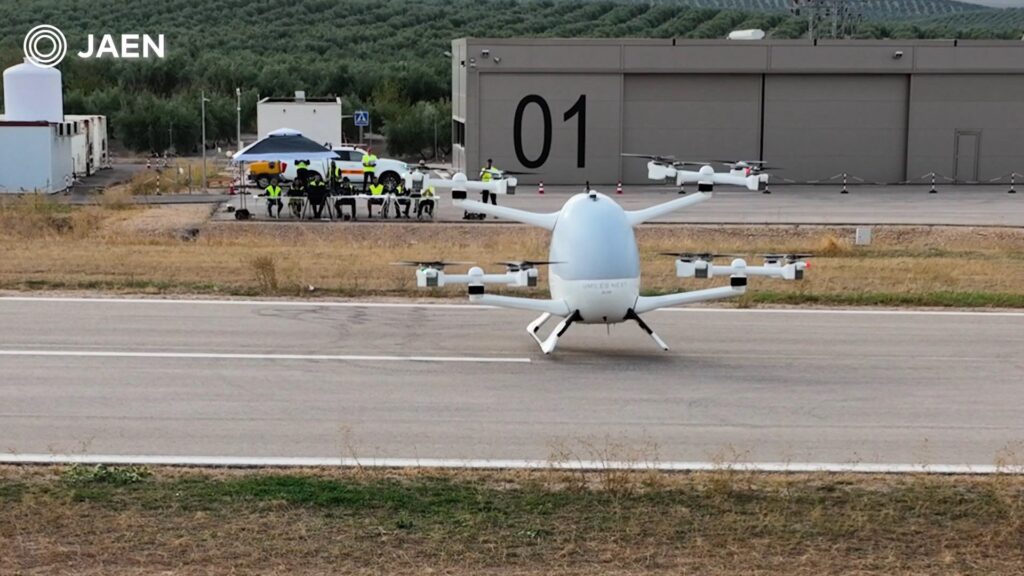
The single-person cabin external shape has also undergone a CFD optimization process to enhance aerodynamic efficiency during cruising conditions. The images below show flow behavior on two models of the cabin, evaluating them for aerodynamic performance, stability, drag, and turbulence profiles during cruising conditions in multiple flight speeds and conditions.

Extensive analysis of the unconventional rotor arrangement has been conducted to ensure the absence of any harmful interactions between it and the cabin. The images below show the evaluation of impeller performance across multiple combinations of design variables such as chord length, pitch angle, and the number of blades. The impeller below has a diameter of 1.25 m, a pitch of 6°, and 3 blades.

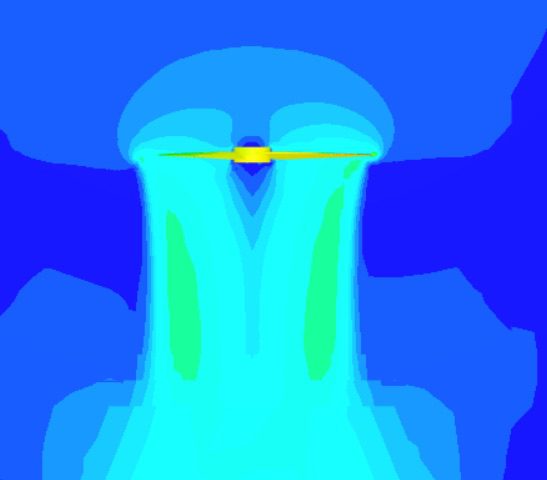
These proprietary technologies, developed in virtual environments with model-based designs that allow for rapid development, can be adapted and integrated into different types of unmanned aircraft systems. Tecnalia is seeing a heightened demand for unmanned systems in inspection, maintenance, and transportation sectors which each have unique requirements.
Moving forward, Lucas and the Innovative Air Mobility department at Tecnalia will be using SimScale for thermal analysis of battery cooling systems, electromagnetic simulation for systems interactions of motors, intricate flight controllers, and more. Already they have avoided buying multiple propellers to bench test as the use of CFD in SimScale has directly replaced physical testing and saved significant time and cost. Testing a single impeller takes 7 hours of work (for each test) including the mechanical assembly of the impeller onto the test rig, the testing itself, data processing, etc. For the air taxi project above, Tecnalia evaluated 5 different impeller designs. For a single test on five impellers, the time saved by using simulations in parallel in SimScale is 35 hours — or a week’s work. This saving scales rapidly when considering all the new product ideas under development.



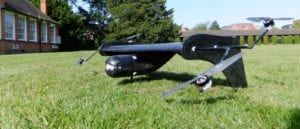

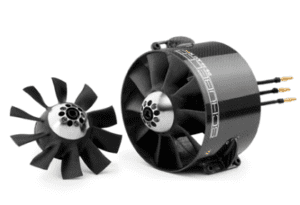

Sign up for SimScale
and start simulating now